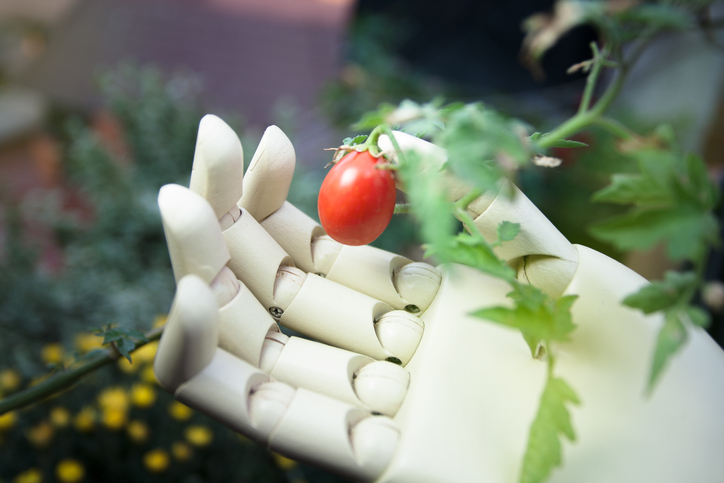Editor’s note: Joseph Byrum is an Aspen Institute Business & Society fellow and spent 25 years as an R&D executive in the agricultural industry. This is the first in a series of guest articles on the potential impact that artificial intelligence (AI) technologies could have on food security.
The views expressed in this article are the author’s own and do not necessarily represent those of AFN.
Scientists and engineers share a common interest in the evolution of complex systems. The role of a scientist is to delve into the depths of natural complex systems, while engineers are supposed to deal with the design and construction of artificial complex systems.
In today’s multidisciplinary world, these traditional distinctions between scientist and engineer have blurred. Scientists look to artificial systems in order to re-engineer natural life, while engineers turn toward natural systems to inspire artificial life. The two disciplines merge in use cases like genetic engineering, which owes many of its recent advancements to artificial machine intelligence. Likewise, AI wouldn’t be where it is now without the lessons learned from observing the natural world.
Given the connection between AI and nature, it’s worth exploring how AI can help solve one of the greatest practical challenges facing agriculture: food security.
Food security can be considered a complex discipline in and of itself. Even though tornadoes, wildfires, snow storms, floods, and droughts regularly conspire against farmers on multiple continents, production for key crops worldwide tends to increase from year to year. But that doesn’t mean everyone who needs food is receiving it.
Despite ample supply, prices worldwide are at a six-year high, according to the UN Food & Agriculture Organization (FAO) – a trend that was in place before the Covid-19 pandemic hit. On top of this, around 14% of the world’s food is lost on the way from the farm to the marketplace, with another 16% ending up being thrown away. That’s a total loss of nearly a third of the world’s food. As the UN notes, the gross amount of food wasted each year is nearly equal to the entire amount grown in Sub-Saharan Africa, which has been hardest hit by hunger.
With the world on its way to a population of 9.7 billion by 2050, it is commonly understood that we have to double production to feed those additional 1.9 billion people. The urgency of the need to boost production complicates the food security issue.
Critics have questioned the accuracy of the doubling figure, saying we can be more efficient and waste less food with less emphasis on boosting production. Or they insist the production numbers today aren’t nearly as dire as they appeared a decade ago. Whatever the case, the picture is more complex than it might seem at first, shifting from a singular focus on improving crop production, to a multiplex need to boost efficiency in the downstream processes that take place from soil to harvest, and harvest to fork. AI can play a critical role in optimizing these processes.
Agriculture’s increasing complexity
Agriculture has been getting more sophisticated since the dawn of man. We started as nomads who gathered and consumed food as one seamless chain. Food was foraged — not produced — and this had great bearing on the psychological and physical interaction between humans, nature, and what we ate. Then the agricultural revolution replaced foraging with cultivation and production. The production of food and the consumption of food became two distinct social systems.
In the post-industrial era, production and consumption have grown further apart. The globalization of agricultural products as commodities necessitated the development of a third system – the supply chain – that connected cultivated produce with consumer markets across the globe. In the past hundred years, it has often appeared as if industrialized technology has driven these three systems even further apart.
Agriculture, the supply chain, and the food sector are now independently complex systems, each a massive industry on their own. In an age in which we need to achieve smarter production outcomes using fewer resources, we have to ask ourselves: How we can bring these three systems back into alignment with one another, in order to create one seamless chain that functions from soil to fork?
In the past decade, the emergence of the agtech sector has used data and computational intelligence to bring crop production and the consumer closer together. Machine learning algorithms and sensors are an increasingly common sight in fields around the world, which shows how complex the production process has become.
As one definition has it, “A complex system is that the overall behavior of the system is not always related in a comprehensible way to the low-level mechanisms that cause the behavior.”
Global food security not only requires a complex approach to agriculture, but also to our relationship with the entire food chain. The nature of AI by definition is inherently complex. By applying the capabilities of AI to the principles of complexity science in agriculture, the hope is that we can re-optimize the food chain as a complete system. Doing so requires a shift in our approach to how we view technology within the industry. It is no longer good enough for technology to simply enhance agricultural production. We need to think more strategically about using technology to move food security forward in a more holistic way.
This is the first in a series of articles that will explore how AI can help make that possible. As engineers in the past turned to natural systems to inspire artificial life, this series will explore use of this same inspiration to reapply artificial life to the order of our food and production systems; in order to achieve true food security.




